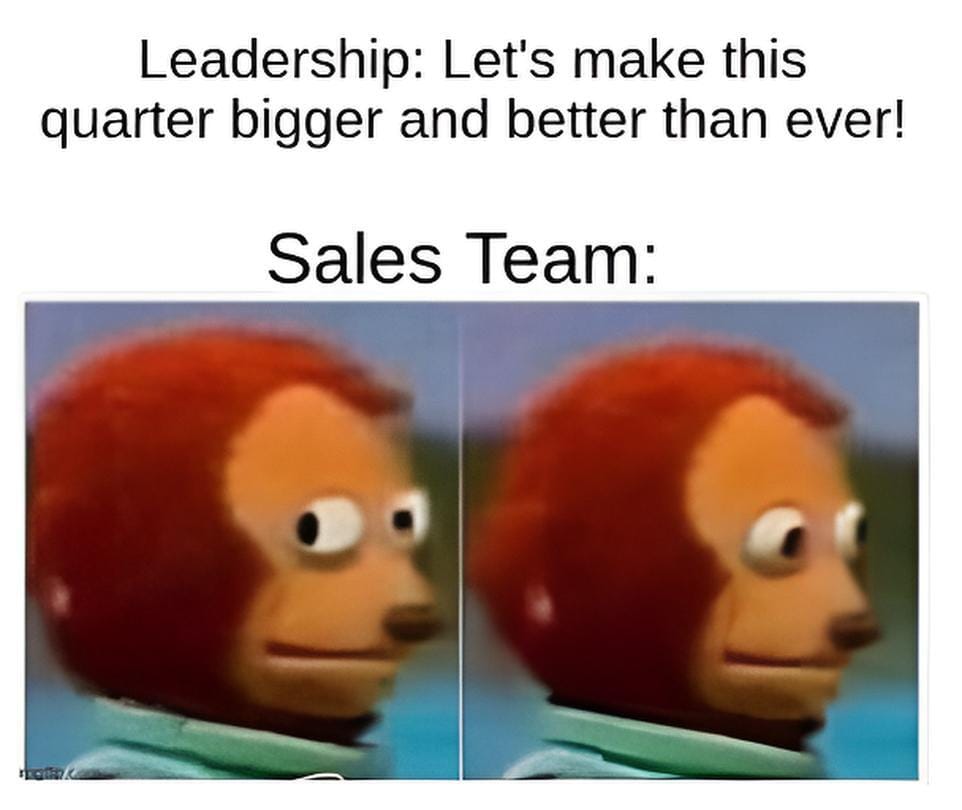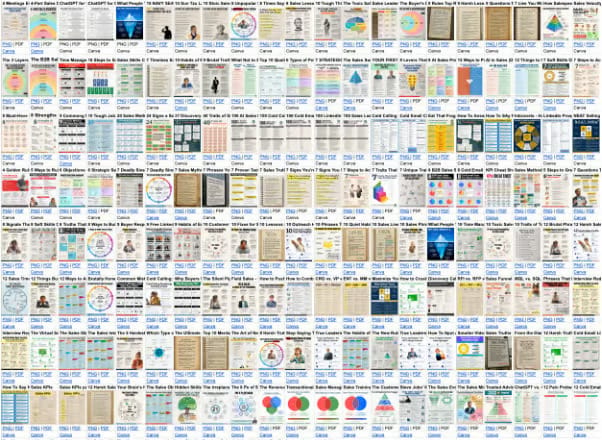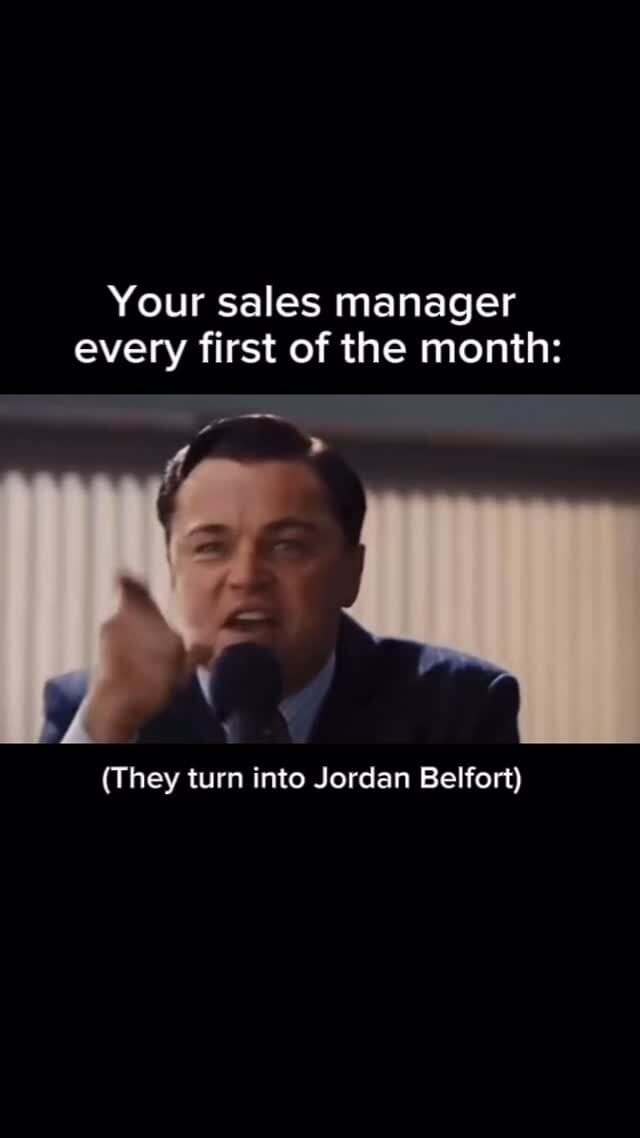- SalesDaily for Leaders
- Posts
- 🌐 rethink your SDR play
🌐 rethink your SDR play
From meeting factory to market validator
Welcome to SalesDaily for Leaders: your weekly briefing packed with actionable insights to help you manage better, coach smarter, and drive results in B2B sales.
Every Sunday, I provide the latest strategies, resources, and ideas for leading high-performing teams and staying ahead in today’s competitive landscape.
Let’s dive in,
Haris
In today’s issue:
Adem Manderovic: Transform SDRs into market validators
Kelley Hippler: Actual leadership means barricade removal
Nate Nasralla: Why feedback loops reveal great candidates
Chad Johnson: How fewer, better calls outperform volume
2025 State of Marketing Operations Report
Stay ahead of industry shifts with the definitive 2025 State of Marketing Operations Report. This all-new edition reveals what 34 marketing ops leaders are prioritizing now: centralized audience management, AI progress, platform-agnostic strategies, and more. Don't miss the action-ready recommendations and firsthand perspectives powering high-performing teams in SaaS, retail, healthcare, and beyond. Get your copy to strategize smarter!
Transform SDRs into market validators
Adem Manderovic highlights how Paul Perrett is rethinking the B2B revenue engine at Firmable to move from $2M to $10M ARR by rewiring your company’s sales approach:
Firmable’s different approach
Instead of “meeting factories,” SDRs become market validators:
✔ Discover companies’ vendors
✔ Track when contracts expire
✔ Note what buyers like or dislike
✔ Work around buyers’ timing
This “cataloguing” process informs every function:
➔ Marketing shapes campaigns with data
➔ Sales re-engages when timing is right
➔ CS looks for potential renewal risks early
Turn SDRs from noise makers into growth drivers.
Create your B2B revenue engine
Map company growth with a 10-line economic model:
➔ Begin with revenue target
➔ Work back to foundations
➔ Keep it simple and visible
The model runs on three parts:
Pipeline maths → objective clarity within 10 lines maximum
Market validation → commercial truth from your own SDRs
Ecosystem activation → brand, community, and partnerships
Real engines blend statistics and market truth for predictable scaling.
Difference of warm vs cold pipeline
Cold pipeline = high cost, low yield
Ecosystem pipeline = low cost, high yield
Trust from referrals halves acquisition friction and doubles conversions.
For small B2B teams, ecosystem-driven inbound becomes their survival.
Paul’s revenue scaling blueprint
✔ Improve success rates before adding headcount
✔ Boost SDR outputs with cataloguing, not volume
✔ Double down on inbound and ecosystem plays
❌ Avoid hiring ahead of the engine
❌ Avoid chasing “meetings booked”
❌ Avoid over-engineering GTM models
Scaling only works if every lever connects back to your model.
👉 SalesDaily Elite - Power up your sales team
If you lead a sales team, run training sessions, or coach reps - this is for you.
With SalesDaily Elite, you get full white-label rights to my complete library of sales cheat sheets, guides, and templates.
✔️ Editable Canva files you can brand as your own
✔️ Ready-to-use for team onboarding, and workshops
✔️ Built for high-impact sales team enablement
Stop wasting time building resources from scratch.
Actual leadership means barricade removal
Kelley Hippler emphasizes that people-centered leadership builds resilient sales teams and minimizes short CRO tenures.
Growth engines prioritize people, not just numbers:
Values of people-centered leadership
Put employees at the center → drives value and retention
Build trust with honesty, transparency, and coaching values
Remove barriers so your teams can succeed faster in selling
📌 When leaders create paths for everyone, productivity compounds.
Modern problems new leaders fall into
⚠️ Many CROs default to performance metrics and managing.
⚠️ CROs are too busy keeping their jobs instead of doing them.
Example: A new leader spends the first quarter producing endless KPI reports instead of coaching managers or learning customer needs.
📌 Resilient leaders slow down and focus on what unlocks progress.
Tangible advice for emerging leaders
❖ Get upward feedback through unbiased, reliable channels
❖ Run AMA sessions, meet high potentials, ask what’s working
❖ Focus on removing friction for better customer interactions
❖ Measure tangible outcomes, not just your selling activities
📌 Leadership enables success across teams by managing processes.
Difference between selling and leading
➤ Top reps often assume they can lead by “just doing what I did.”
➤ But individuals have different skills and personal motivations.
Example: A high-performing rep who closed deals with charisma might struggle to coach an analytical seller who wins deals through research and process.
📌 Leadership redirects the spotlight from yourself to your team.
How to prepare for sales leadership
➤ Test high-performers’ interest and fit with mentorship opportunities.
➤ Some will realize they don’t want the job, which saves everyone pain.
Example: Pair your top AE with a new hire as a mentor. If they enjoy coaching and problem-solving, it’s a sign they might succeed as a manager.
📌 The best leader wants everyone to grow, not just climb the ladder.
Why feedback loops reveal great candidates
Nate Nasralla outlines a practical interview hiring test for Mid-Market AE candidates that reveals how quickly candidates adapt by knowing what qualities to watch out for:
1. Pick your customer and why they bought
↳ Example: If you recently closed a SaaS deal because the customer needed integrations, frame the exercise around that same use case.
🔑 Learn how candidates establish discovery for real-world drivers.
2. Give objections for candidates to review
↳ Example: A clip of a CFO asking about ROI or a sales manager pushing back on implementation timing.
🔑 This forces your candidates to prepare like real sellers beforehand.
3. Run a mock discovery and presentation
↳ Example: You act as the VP of Sales, and candidates must ask smart discovery questions before giving a concise demo tied to your stated pain.
🔑 See if they can balance curiosity with clarity, and if they know how to demo.
4. Pause to give feedback on some changes
↳ Example: Maybe they skipped confirming budget authority, or they pitched a feature instead of a business outcome.
🔑 A strong candidate listens, adjusts, and responds well to critiques.
5. Repeat the exercise with a new customer
↳ Example: Now you play a Head of Operations focused on efficiency, not revenue. They must pivot to a new angle.
🔑 Watching the difference shows whether they adapt fast enough.
6. Follow up with a sharp, buyer-ready message
↳ Example: A two-paragraph email summarizing their problems, with customized value-based propositions, and outlining your next steps forward.
🔑 If emails are concise enough to forward internally, they pass your final test.
What to watch for:
✔ Whether they adapt between first and second attempts
✔ Whether they respond positively to feedback or freeze up
✔ How well they translate discovery into written follow-ups
The objective isn’t just spotting baselines but gauging their ramp speed.
TO-GO
Chad Johnson: How fewer, better calls outperform volume
Matt Green: Broken systems are killing quota attainments
Ash O’Connor: Only 29% of SaaS companies have an SDR function
Richard Smith: Team-based feedback drives quicker growth
Marcus Chan: Elite managers transform forecasts into results
QUOTE OF THE DAY
"The only way RevOps work is with a mandate from leadership that aligns every function on revenue."
PODCASTS
HUMOR






